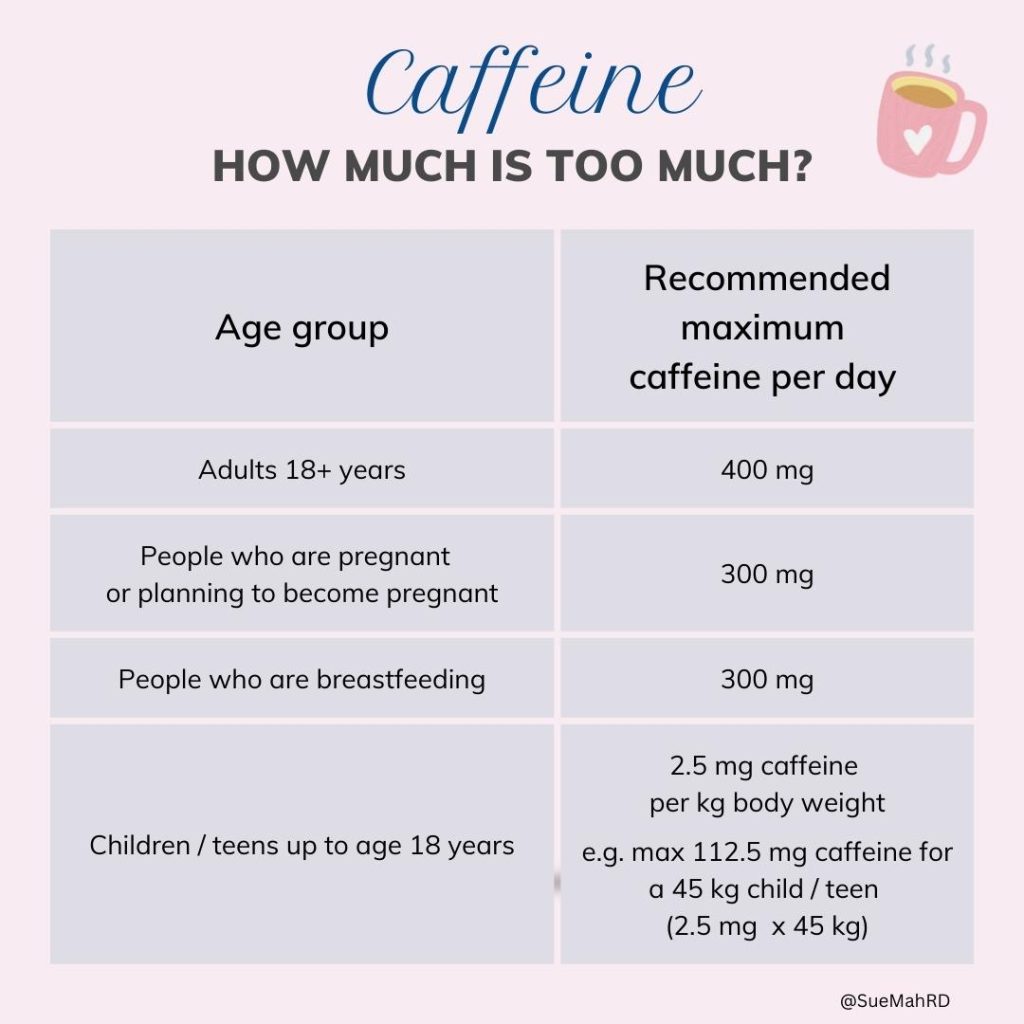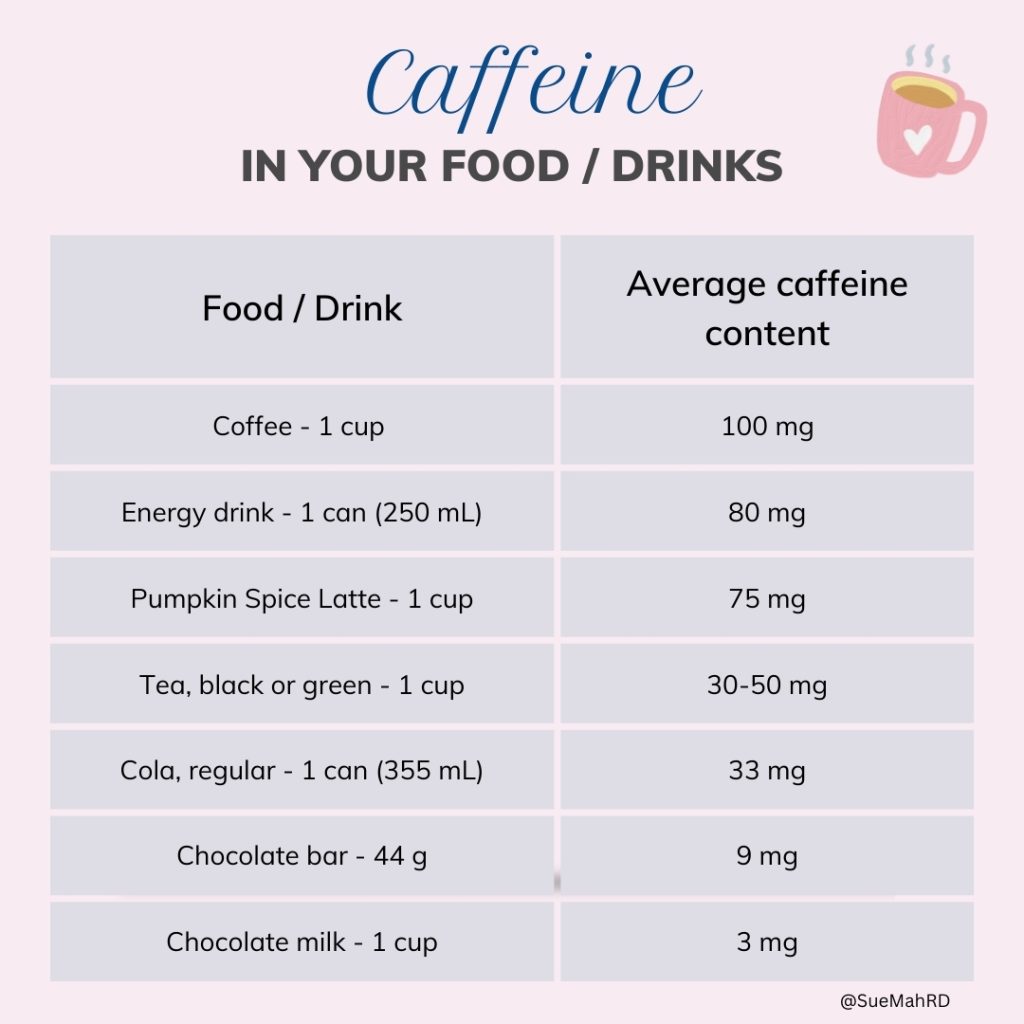
Health Canada has set recommended maximum daily amounts of caffeine depending on your age. For children and teens under the age of 18, the recommended caffeine intake depends on their body weight. Consuming too much caffeine can lead to insomnia, irritability, nervousness and headaches. If you’re sensitive to caffeine, consider having less.

Caffeine is found naturally in coffee, tea, chocolate and certain flavourings such as guarana and yerba mate. Check out the caffeine content of some common foods and beverages to see where you’re at with your caffeine intake for the day. Keep in mind that many mugs and store bought drinks are larger than a standard cup.

Do you have a food or nutrition question? Ask us and we’ll feature the answer in one of our next newsletters.
Written by: Sue Mah, MHSc, RD, PHEc, FDC ~ Award-winning dietitian and Co-founder, n4nn

 Researchers at the University of Guelph have found a way to develop a healthy chocolate. The secret ingredient? DAGs! DAGs are short for special fats called diglycerides. Compared to triglycerides (TAGs) which have three fatty acid “arms’ in its structure, DAGs only have two fatty acid “arms.” DAGs make up around 10% of the fats found in vegetable oils and are metabolized differently than TAGs. Scientists found that components of DAGs are not stored in fat cells but are used as energy instead. This means that DAGs help burn fat. Also, since DAGs are smaller compounds, when moving in the blood stream they won’t clog the arteries and veins in the same way as the larger TAGs. Many products have been developed in an attempt to improve the fat quality or reduce the fat quantity, and DAG’s are an exciting new ingredient to keep an eye on especially when it comes to melt-in-your-mouth chocolate.
Researchers at the University of Guelph have found a way to develop a healthy chocolate. The secret ingredient? DAGs! DAGs are short for special fats called diglycerides. Compared to triglycerides (TAGs) which have three fatty acid “arms’ in its structure, DAGs only have two fatty acid “arms.” DAGs make up around 10% of the fats found in vegetable oils and are metabolized differently than TAGs. Scientists found that components of DAGs are not stored in fat cells but are used as energy instead. This means that DAGs help burn fat. Also, since DAGs are smaller compounds, when moving in the blood stream they won’t clog the arteries and veins in the same way as the larger TAGs. Many products have been developed in an attempt to improve the fat quality or reduce the fat quantity, and DAG’s are an exciting new ingredient to keep an eye on especially when it comes to melt-in-your-mouth chocolate.